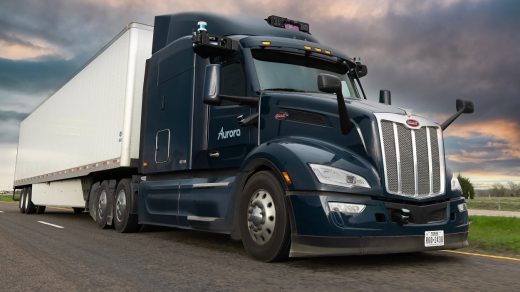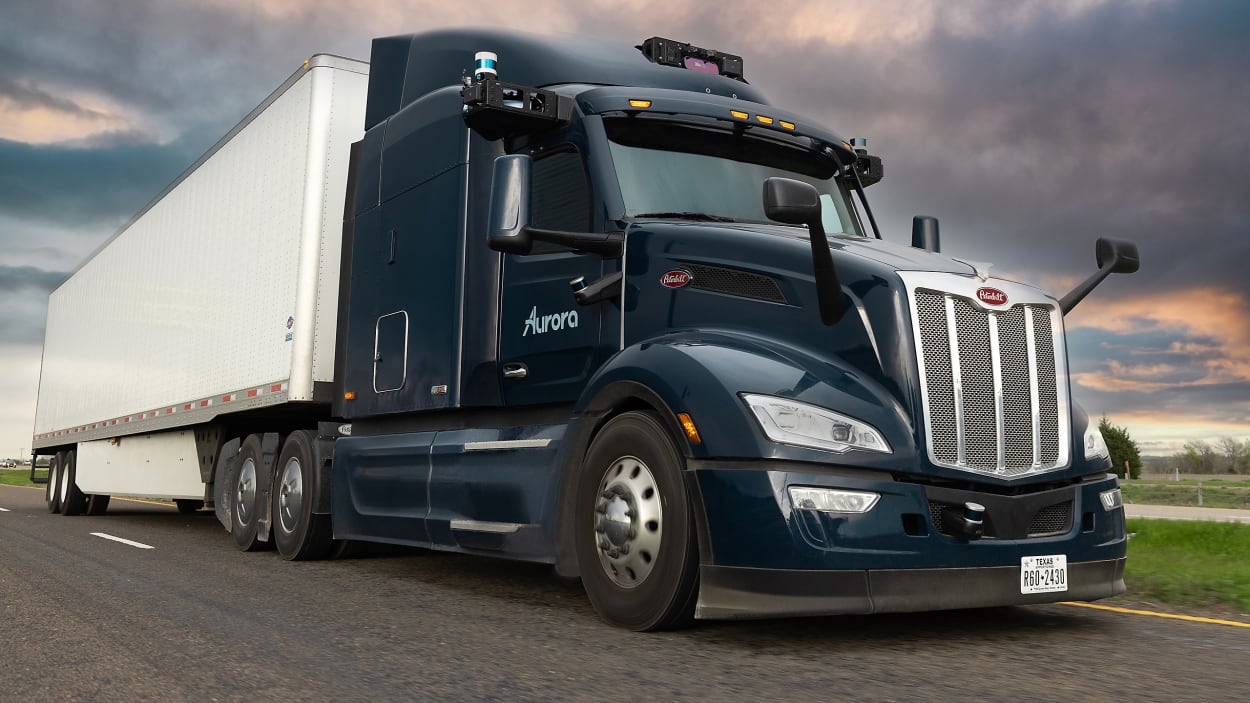Aurora’s self-driving truck tech is one step closer to hitting the road
By Jessica Bursztynsky and Harry McCracken
Self-driving truck startup Aurora announced on Monday that it has reached its “feature complete” milestone. The long-awaited benchmark means the company believes it has its core technology in place and can focus on fine-tuning its autonomous trucks as it races toward making them completely roadworthy, a step it calls “Aurora driver ready.” It expects to begin commercial deployment in 2024, starting with the highway corridor from Dallas to Houston.
With the company’s new Aurora Driver Beta 6.0 software, “all the parts are in place,” says CEO Chris Urmson in an interview with Fast Company. “It may not work as well as it needs to launch the truck yet, but it’s taking a huge amount of risk off the table, because it means we’ve got a solution for all of it, and we just need to refine.”
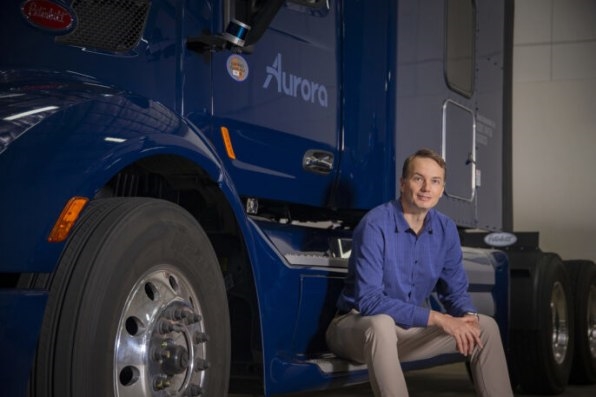
Urmson, an original member of Google’s self-driving car project—now known as Waymo—is a soft-spoken but assured leader who started Aurora along with former Tesla head of autopilot Sterling Anderson and Drew Bagnell, who led Uber’s autonomy and perception team. Since its 2017 inception, Aurora has acquired two makers of lidar sensors and Uber’s self-driving unit, gone public, partnered with Volvo, Toyota, Paccar, and Uber’s logistics arm, Uber Freight, and undertaken a self-driving freight pilot test with FedEx. It’s shown up as a strong competitor in a nascent field that’s struggled with growth as funding for expensive, long-term technological gambits has dried up.
Aurora’s strategy of partnering with existing companies to bring autonomous vehicles to reality reflects its desire to “focus on the thing we can do best,” says Urmson. In part, that’s a lesson he took away from his time at Google, which led him to conclude that the company was “not really a great partner,” he explains. “They’re really good at a lot of things. And that means that, at times, they may not value what other companies bring to the table.”
Taking a collaborative approach also makes sense to Aurora’s partners—including Uber, which spent enormous sums pursuing its own self-driving initiative before concluding that it was better off working with Aurora. “You need people that are amazing in autonomous technology, like Aurora,” says Lior Ron, CEO of Uber Freight. “And you need people that intimately understand the constraints and opportunities of those solutions in the freight network and can work with shippers to commercialize the technology, like Uber Freight.”
The Aurora-Uber partnership includes a place for Uber CEO Dara Khosrowshahi on Aurora’s board. “I think of him as a mentor and a friend,” says Urmson. “He just has a bunch of operational experience. When I have a challenge, I can talk to him about it and get some input and ideas on how to solve it.”
It started in the desert
Urmson has dedicated his whole career to autonomous driving, starting in 2002 when the Defense Department announced the DARPA Grand Challenge, a robot race between Los Angeles and Las Vegas. He was part of a team from Carnegie Mellon that “ended up going about seven miles the first year, out of 150,” he remembers. “And then we got stuck on a berm and basically burst into flames. Then a year later we came back with two Humvees and ended up finishing behind the team from Stanford. And then the third year [DARPA] moved it from a race across the desert to something where we had to drive on our side of the road and interact with other vehicles. That was the Urban Challenge. And we ended up winning that one, which was exciting.”
I just was naive about the complexity of achieving the level of safety we need to make this work well.”
After spending some time at construction-equipment giant Caterpillar working on their “big off-highway trucks,” Urmson was recruited to Google in 2009 to help start its self-driving research. More than seven years later, he decided to leave the company and take a break to contemplate what he wanted to do next. That’s when he, Anderson, and Bagnell came up with the concept that became Aurora.
Companies in the self-driving space are tackling the segment from different angles. Some, like Waymo, are diving directly into offering Uber-like autonomous rideshare services. Aurora, meanwhile, is betting that it can build up its trucking unit before turning its attention to the rideshare space in full.
By focusing on trucking first, Aurora can postpone dealing with some of the intricacies of teaching a vehicle to drive itself. “For long-haul trucking, you’ve got a much simpler operating domain than you do for urban driving,” says Sam Abuelsamid, principal analyst at market research firm Guidehouse Insights. “You don’t have to deal with intersections, pedestrians, cyclists, [and other] vulnerable road users. You’re generally going in one direction. You don’t have cross traffic.”
That’s not to say that self-driving trucks are an easy business to break into. At its founding, Aurora intended to start with smaller vehicles: Lidar technology wasn’t yet advanced enough to “see” as far down a highway as was necessary for a truck to operate safely, Urmson says. Still, many view trucking as the best bet for broad commercial adoption of self-driving technology in the near future.
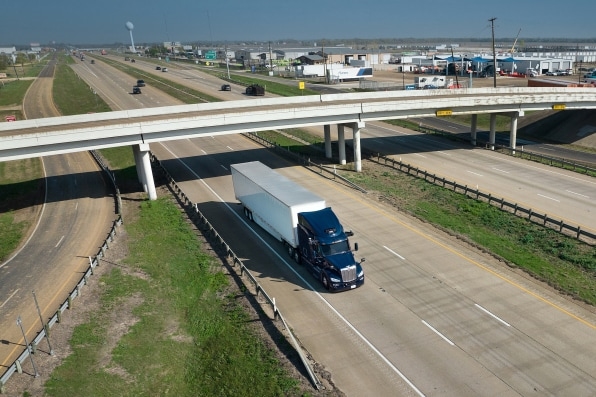
“If [Aurora] can start to scale up the trucking business, then they have the potential to start generating the revenue that will help sustain the company until they can get to the point of deploying things like urban passenger vehicles,” says Abuelsamid.
Abuelsamid gives Aurora particular credit for its dedication to safety, the most critical goal for any autonomous-vehicle effort. “Their whole philosophy when they started the company was to do this in a way that is safe and proven, before it’s scaled up widely,” he says.
Early in his research into autonomy, Urmson admits, “I just was naive about the complexity of achieving the level of safety we need to make this work well.” So was the entire industry, which is why initial giddy expectations that self-driving vehicle would be commonplace within just a few years didn’t pan out.
The safety issues Aurora has had to tackle go far beyond ensuring that its trucks can steer and brake themselves at least as well as a human driver would. One of the most essential jobs performed by human drivers is to react to emergencies—for instance, understanding that the truck has suffered a failure and needs to pull over as soon as safely possible. Aurora’s fault management system replicates this process by detecting, diagnosing, and responding to problems.
Even once a truck has safely removed itself from traffic, autonomy introduces new challenges to overcome. “Normally, if a truck pulls off the road, you have to put flares or little triangles behind it,” explains Urmson. “We could certainly figure out a way to do that, but it’s harder if you don’t have a person in the truck. What we looked at was how we can get an equivalent or better level of safety with a technology that is frankly easier for us to implement. And it turns out that technology is a light.” Aurora worked with Waymo to design a flashing beacon and seek permission from federal road-safety authorities to adopt it.
The economic factor
By taking on trucking first, Aurora is offering a pretty clear value proposition to the transportation and logistics industry. One of the core economic measures for a large carrier or trucking company is how much revenue it can generate per truck. Human drivers are limited to 11 hours of driving a day before they’re required to get off the road and rest. An autonomous truck can safely do 20 hours.
“If you take a core element of a business and you’re able to double a key metric, that’s huge,” says Urmson. “That’ll have implications for consumers and their ability to access goods.”
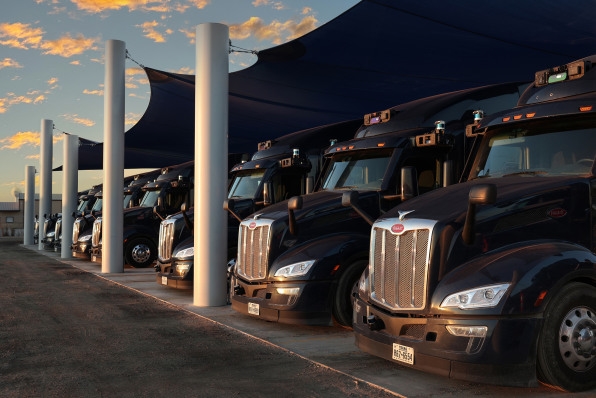
Even before autonomy has a chance to help, the industry can’t get all the humans it needs to keep goods in transit: There’s a massive driver shortage in the trucking industry, which is expected only to grow worse in the coming years. “The population driving trucks is aging,” says Urmson. “It’s just not as desirable a job for folks. And that’s because it’s shorter life expectancy and time away from family.” When Aurora’s tech is fully roadworthy, it could go a long way toward making up for the staffing shortfall.
What about people already driving trucks who fear being rendered unemployable by Aurora’s technology? “I expect that if you’re a truck driver today, you will likely be able to retire as a truck driver, should you choose to,” Urmson argues. “But there will also be really interesting options. You might become someone who is a remote specialist supporting one of these trucks or a fleet of these trucks.”
We look at trucking, and we see a landscape where we feel like [we’re] the only viable player.”
Before truck driving starts to dwindle as an opportunity for humans, autonomous-driving technology has to fully deployed—an eventuality dependent on all sorts of factors beyond Aurora’s control, including regulators giving it the go-ahead. The current economic climate has already knocked out some players, such as Argo AI, which initially seemed like a strong competitor. The company, backed by Ford and VW, struggled to find new investors and shuttered in October. Last September, Bloomberg’s David Welch reported that Urmson had contemplated a variety of futures for Aurora, including selling itself to Apple or Microsoft if independence was no longer a viable possibility.
Aurora says that it currently has enough runway to operate through its commercial launch. But the company has yet to convince the market that its future is bright: Its stock has fallen by more than 85% since its November 2021 IPO. “I don’t know if they’ll run out of money, but the time between now and commercialization isn’t speeding up magically,” says Gartner analyst Mike Ramsey. “It’s going to be a challenge.”
And even if Aurora hits its targets for the next steps beyond the feature-complete status it just reached, it’s on a long quest. Early optimism about self-driving’s transformative impact has generally given way to far more cautious expectations about the road ahead. “We’ll see automation continue to grow in the automotive and transportation industry for sure, but it may not happen in this big-bang type of way,” predicts Ramsey. “It’s probably going to be slow and methodical, and by the time we have this promised full autonomy, it will be so commonplace that no one will even notice it. It’ll probably take decades.”
Urmson isn’t downplaying the work left to be done, but even at a moment when economic headwinds aren’t helping, he remains an optimist.
“We look at trucking, and we see a landscape where we feel like [we’re] the only viable player,” he says. “And it’s a business that’s an $800 billion business in the United States, and we’re a company that is well capitalized, that’s got incredible talent, amazing partnerships, and awesome technology. We’re like, ‘Let’s just go execute.’”
(55)

